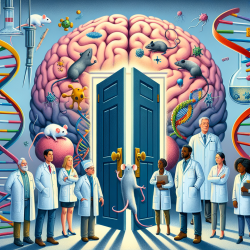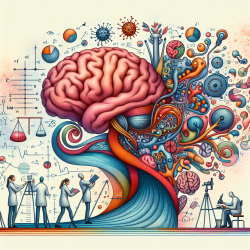Autism Spectrum Disorder (ASD) is a complex neurodevelopmental condition characterized by a wide range of symptoms and varying degrees of severity. Recent research has provided valuable insights into the underlying neuropathological and genetic factors contributing to ASD. This blog post explores key findings from the research article "Neuropathology and Animal Models of Autism: Genetic and Environmental Factors" to help practitioners enhance their understanding and approach to autism treatment.
Understanding the Neuropathology of Autism
The cerebellum has emerged as a significant area of interest in autism studies. Research indicates that reductions in Purkinje cell numbers, which are GABAergic output neurons of the cerebellum, are common in individuals with ASD. These findings suggest that cerebellar dysfunction may play a crucial role in the manifestation of autism symptoms.
Additionally, abnormalities in other brain regions such as the limbic system, amygdala, and hippocampus have been observed. These areas are associated with social functioning, emotion regulation, and memory consolidation—functions often impaired in individuals with ASD.
The Role of Genetic Factors
Genetic research has identified several genes associated with autism, including those related to Fragile X syndrome, Rett syndrome, and tuberous sclerosis. These genetic models have been replicated in animal studies, providing valuable insights into the behavioral and neuropathological aspects of ASD.
- Fmr1: Linked to Fragile X syndrome, Fmr1 KO mice exhibit autism-like behaviors such as reduced social interactions.
- MeCp2: Associated with Rett syndrome, disruptions in this gene lead to anxiety-like behaviors and social interaction deficits in mouse models.
- TSC1/TSC2: Mutations in these genes result in tuberous sclerosis, often accompanied by autism-like symptoms.
Environmental Influences on Autism
Environmental factors also play a significant role in the development of ASD. Exposure to substances like thalidomide and valproic acid during pregnancy has been linked to an increased risk of autism. Animal studies have shown that these substances can lead to changes in brain development similar to those observed in ASD.
Furthermore, maternal infections during pregnancy have been associated with an increased risk of autism in offspring. Rodent models have demonstrated that maternal immune activation can result in ASD-like behavioral abnormalities.
Implications for Practitioners
The findings from neuropathological studies and animal models provide a deeper understanding of the complex interplay between genetic and environmental factors in autism. Practitioners can leverage this knowledge to tailor interventions more effectively. By considering both genetic predispositions and environmental exposures, practitioners can develop comprehensive treatment plans that address the unique needs of individuals with ASD.
For those interested in further exploring these insights, I encourage you to read the original research paper: Neuropathology and Animal Models of Autism: Genetic and Environmental Factors.










